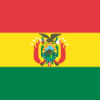INTELLECTUAL PROPERTY RIGHTS IN BOLIVIA

Opposition Term |
30 Days |
Registration Term |
10 Years |
First Renewal Term |
10 Years |
Subsequent Renewal Term |
10 Years |
The Trademark Act of 1918 and the Andean Pact Decision, latest in force Decision 486 of December 2000 - form the legal basis for trademark registration in Bolivia.
Bolivia is a member of the Andean Pact. According to the Andean Pact Decision agreement, there are common rules in the trademark law of all the member states of the Andean Pact (Bolivia, Colombia, Ecuador, and Peru).
Bolivia is a member of the Paris Convention for the Protection of Industrial Property.
For getting a trademark registered in Bolivia, an application has to be filed with SENAPI, an acronym for National Intellectual Property Service (Bolivian Intellectual Property Office).
It follows a 'first to file' system.
Bolivia follows the 11th edition of Nice Classification. Multi-class trademark applications are not acceptable.
The third parties can file opposition actions against a trademark application within thirty (30) days following its publication date in the official gazette.
In Bolivia, registered trademarks have a validity of ten (10) years from the date of registration, which can be further renewed indefinitely for successive periods of ten (10) years each.
The grace period to renew a trademark after the date of expiry is six (06) months.
The term for cancellation of a registered trademark based on non-use is three (03) years from the date of registration.
Bolivia is a member of the Paris Convention for the Protection of Industrial Property.
Article 15 of Decision 486 of December 2020 (the Andean Pact Decision) deals with the mechanism of patent protection in Bolivia.
In Bolivia, an invention that satisfies the conditions of novelty, inventive step, and industrial applicability, subjects to patentability. Process patent and product patent are the two types of patents that can be protected.
The types of patent applications that can be filed include Non-Convention Application, Convention Application, and Divisional Application.
In Bolivia, oppositions may be filed after the publication of a patent at the pre-grant stage within two (02) months approximately. For initiating opposition proceedings at the post-grant stage, a patent nullity needs to be filed.
The patent of invention lasts for twenty (20) years in Bolivia. The first annuity will be due in the 1st year, and the last annuity will be due in the 20th year. Two or more annuities can be paid in advance. A six-month grace period for the payment of annuities exists in Bolivia.
Bolivia is part of the Andean Community, which also has Colombia, Ecuador, and Peru as its other members. The Andean Community has a common Intellectual Property Regime known as DECISION – 486, applicable to all the 04 member-states, to which they all have to adhere.
For getting an industrial design registered in Bolivia, an application has to be filed with its IP office known as Servicio Nacional De Propiedad (SENAPI).
The types of industrial design applications that can be filed in Bolivia include Non-Convention Application and Convention Application.
Utility model protection isn't provided under industrial design protection in the nation.
Opposition against an industrial design application can be raised within one (01) month from the date of publication of the industrial design.
The maximum term of industrial design protection in Bolivia is ten (10) years.
Bolivia is a signatory to the Berne Convention for the Protection of Literary and Artistic Works, the Universal Copyright Convention (Geneva), and the Universal Copyright Convention (Paris).
The basic law on copyright protection in Bolivia is Law No. 1322 of April 13, 1992, on Copyright.
Copyright registration in Bolivia is extremely important for a copyright holder to have the all important proof of copyright.
The standard copyright protection term lasts for the lifetime of the author plus fifty (50) years following his death. However, the duration of copyright protection varies depending on the type of work.

